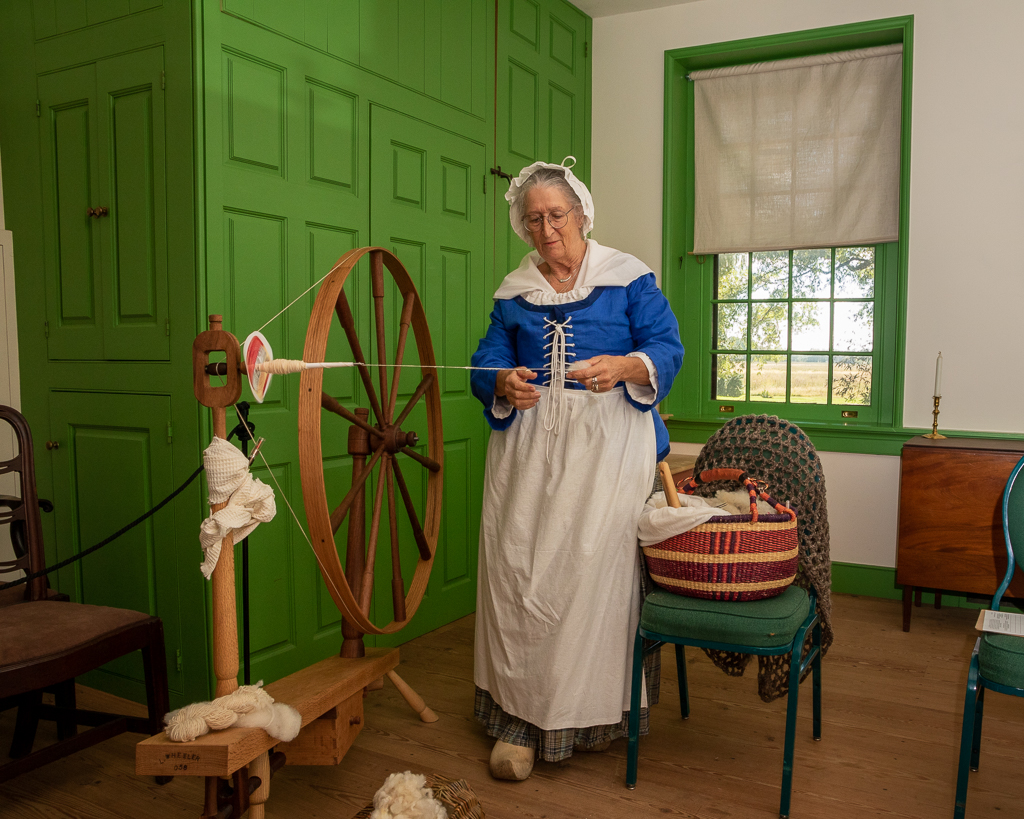Thistledown Fiber Arts Guild: A history of women in textiles

For over 20 years, members of the Thistledown Fiber Arts Guild have partnered with the Delaware Division of Historical and Cultural Affairs (HCA) to uphold the tradition of textile working and share it with the public.
The Thistledown Fiber Arts Guild is a group of history enthusiasts made up of weavers, spinners, knitters, crocheters, seamstresses, quilters, lace makers, fiber and fabric dyers who enjoy keeping time-honored trades, crafts and arts alive by sharing their skills and teaching each other and local community members about how people have been making fiber, cloth and art for centuries. This group of volunteers share their experiences and skills on a regular basis at historic sites such as the John Dickinson Plantation and historic events throughout the calendar year. They provide an invaluable service to our local and tourist communities, sharing historic trades and artisan skills from decades of learning and experience that benefit both visitors and staff at Delaware historic sites. Over the last calendar year, Thistledown contributed 160 hours of live demonstrations at various sites — multiplied over the two decades they have been in service, that amounts to over 3,000 hours.
All of the skills practiced by the Thistledown Fiber Arts Guild are deeply rooted in women’s history. Throughout centuries and across cultures, the skill of producing textiles and clothing has belonged to and been passed down by women, dating back as far as 100,000 to 500,000 years ago. Women often did this kind of work for their households, but many women of many eras used these skills as a means of earning a living — from Ancient Greece and Egypt, when women traded the fabrics and clothing they made to merchants, all the way to the Industrial Revolution of the 19th century when women found work as seamstresses, wool spinners and laundresses in factories.
While textile work served practical purposes, women across the world found ways to bring artistry into the pieces they made. Girls — who were historically kept from the education of reading and writing — used the textile skills they were taught instead as their own means of recording their experiences. Women in Revolutionary France used knitting and crochet to document executions by guillotine, and in the Chinese Miao tribe, embroidery is still referred to as nu shu, meaning “women’s script”. Navajo women of the early 1800s wove intricate blankets worn by members of their community to indicate social status, which later became highly sought-after trade commodities when America began to colonize the West, valued for their beauty.
The arts of wool spinning, weaving and embroidery require immense technical skill, some of which still require work by hand — crochet, for instance, cannot be done by machine. In Delaware, the women of the Thistledown Fiber Arts Guild keep these skills alive and demonstrate them monthly at the John Dickinson Plantation. To see the dedication and craftsmanship of historic women firsthand, visit John Dickinson Plantation on Saturday, March 9, when the Thistledown Fiber Arts Guild will meet in the Mansion Dining Room. You might even get the chance to learn a new historical skill for yourself!
Learn more about the Thistledown Fiber Arts Guild by visiting them on Facebook at facebook.com/ThistledownFiberGuild. To learn more about volunteering at HCA’s museums and historic sites, go to history.delaware.gov/volunteers or contact us at hca_volunteersvcs@delaware.gov.


